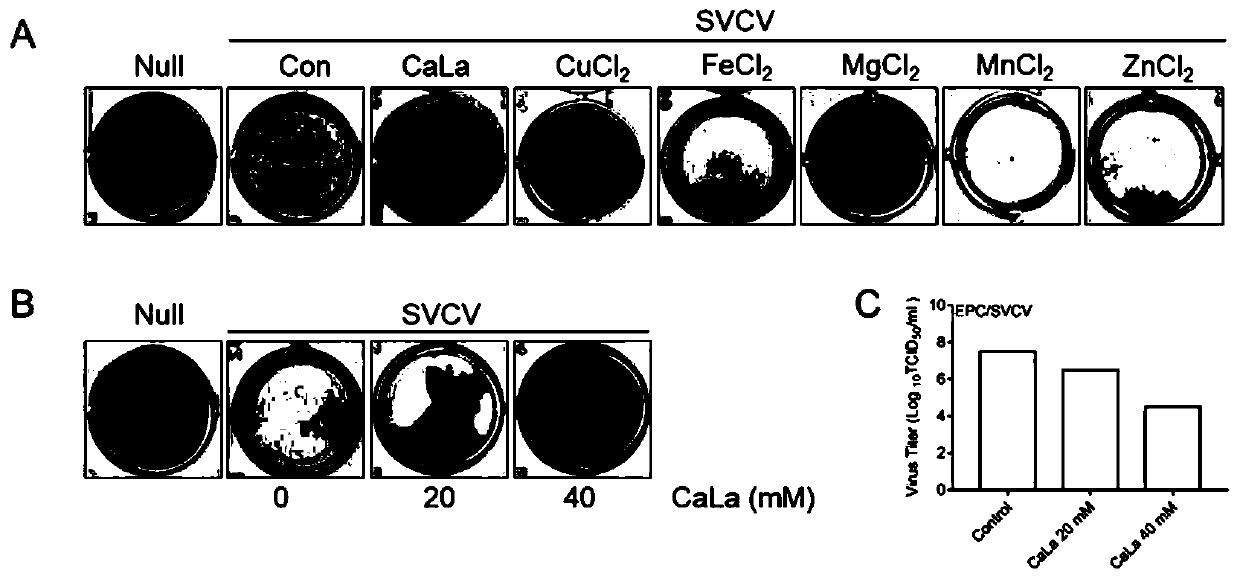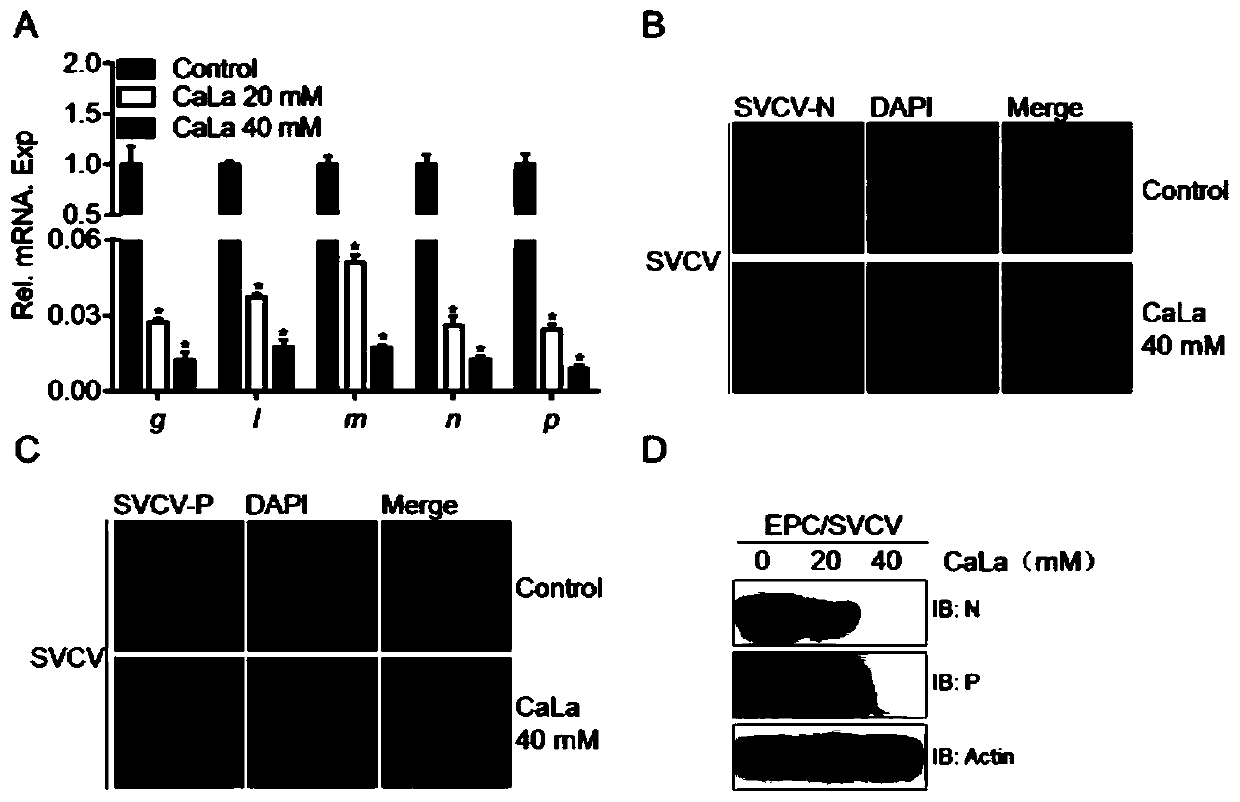Application of calcium lactate in preparation of medicine for preventing and treating infection caused by spring viremia of carp virus (SVCV)
A technology of carp spring viremia and virus infection, applied in the direction of antiviral agents, anhydride/acid/halide active ingredients, aluminum/calcium/magnesium active ingredients, etc., can solve the problems of immature aquatic animal virus diseases, etc. No drug residues, single ingredients, no toxic and side effects
- Summary
- Abstract
- Description
- Claims
- Application Information
AI Technical Summary
Problems solved by technology
Method used
Image
Examples
Embodiment 1
[0019] Example 1: Calcium lactate enhances the function of cells against SVCV infection
[0020] 1. Fish cells (EPC) were prepared at 1×10 per well 5 After seeding the number of cells into 24-well plate of cell culture plate and culturing overnight, add 1 μl SVCV (MOI=1) to each well, and add 40mM CaLa / CuCl respectively at the same time 2 / FeCl 2 / MgCl 2 / MnCl 2 / ZnCl 2 The cells were treated for 24 hours, and the cytopathic effect was observed under the microscope. The cells were fixed with PFA and stained with crystal violet. The proportion of dead cells was significantly reduced ( figure 1 A), which shows that calcium lactate treatment of cells can significantly enhance the antiviral ability of cells. In order to further confirm this result, after EPC cells were infected with SVCV, different concentrations of calcium lactate were added to treat the cells for 48 hours, and the occurrence of cytopathic effect was observed under a microscope ( figure 1 B), collect the s...
Embodiment 2
[0022] Example 2: Expression of apoptosis factor p53 after calcium lactate treatment of fish cells infected with SVCV
[0023] The previous research work of the inventors showed that SVCV-infected cells are closely related to the expression of p53. In order to detect the expression levels of endogenous and exogenous p53 after calcium lactate treatment, ZFL cells or EPC cells were seeded in 6-well plates and cultured for 24 hours. Wherein EPC cells were transfected with 2 μg pCMV-Myc or Myc-p53, then treated with different concentrations of calcium lactate (20, 40 mM) for 24 h, and the cells were collected to detect the expression of p53 protein in the cells by Western Blot ( image 3 A and 3B), endogenous p53 was detected with p53 antibody, and exogenous p53 was detected with Myc tag antibody. The results showed that after calcium lactate treatment, the expression of endogenous or exogenous p53 protein increased significantly and had a dose-dependent effect. In addition, in or...
Embodiment 3
[0024] Example 3: Calcium lactate treatment of ubiquitination modification of p53 protein in fish cells infected with SVCV
[0025] 1. As a reversible protein modification, ubiquitination is mainly involved in regulating the stability, activity and localization of target proteins. Calcium lactate treatment of cells can promote the expression of p53, so whether calcium lactate treatment affects the ubiquitination of p53 was detected. First inoculate EPC cells in 10cm 2 Cell culture dishes were cultured overnight and transfected with 5 μg Myc-p53 and 1 μg HA-Ub. After 24 hours, they were treated with 20 and 40 mM calcium lactate for 18 hours, and then treated with MG132 for 6 hours. Cells were collected for ubiquitination experiments and Western Blot analysis ( Figure 4 A). The results showed that calcium lactate treated cells could promote the ubiquitination of p53 in a dose-dependent manner.
[0026] 2. The previous research work of the inventors showed that SVCV-infecte...
PUM
 Login to View More
Login to View More Abstract
Description
Claims
Application Information
 Login to View More
Login to View More - R&D Engineer
- R&D Manager
- IP Professional
- Industry Leading Data Capabilities
- Powerful AI technology
- Patent DNA Extraction
Browse by: Latest US Patents, China's latest patents, Technical Efficacy Thesaurus, Application Domain, Technology Topic, Popular Technical Reports.
© 2024 PatSnap. All rights reserved.Legal|Privacy policy|Modern Slavery Act Transparency Statement|Sitemap|About US| Contact US: help@patsnap.com










